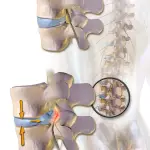Spinal injuries might lead to chronic pain and reduce the quality of your life, living with spinal pain might make your life miserable. You can practice yoga, meditation, and physical exercises which reduce the pain, some physical therapists insist on using the inversion table, which involves putting the head on the ground with the feet high up to ease the pain. You can practice inversion therapy without using support.

However, if the pain is disabling, you can use the inversion tables. Your physical therapist can teach you how to use an inversion table to alleviate the spinal pain appropriately, here is how to use the inversion table.
Place the Inversion Table in an Open Place
Your inversion table should be in an open place to avoid distractions, you might bang your head significantly if the chronic pain or health condition has reduced your mobility. Then secure it with a mat or rag to create friction with the floor, the rug ensures the inversion table does not slip.
The attic, garage, or any other room which offers at least five feet of space would be suitable for the inversion table as you would need room for movement when using the inversion table.
Adjust the Inversion Table to Your Height
The inversion table is highly adjustable to meet the user’s needs, thus, you would start by adjusting the height. Height adjustments make it possible to manipulate the inversion table to fit your body and ensure you easily engage in the therapy.
Your inversion table will have a bar with measurements that you can adjust with a twistable knob. Once you have determined the suitable height, it would be wise to tighten the knob to avoid unnecessary movements. You may refer to the inversion table adjustment manual to adjust the height.
Start With the Lowest Degrees of Inclination
You can start with the lowest degree inclination when using the inversion table for the first time and gradually increase the inclination. Too much inclination may make you feel dizzy and a sudden blood rush to the head, thus, it would be wise to know the limits. You can use the safety strap to ensure you don’t invert your body completely.
Climb On the Inversion Table and Secure Your Body
Once the inversion table is at the suitable height and angle, you may slide in so that the back is flush with the table, and you will be facing the ceiling. Do a partial sit-up to adjust the feet straps on the ankles and feet to secure yourself on the table effectively.

Putting shoes on during the inversion may be way safer than adjusting bare feet. Once you are secure on the inversion table, you can lift your hands above the head and throw the body on the inclined table. The inversion table will recline to the specific degrees, you would relax at the specific degrees until you get the hang out of it. You may feel your back, muscles, and tendons stretching painlessly. When using the inversion table for the first time, you might need assistance adjusting yourself and getting up from the table.
Increase the Frequency
There is no set time for using the inversion table, and you would set the most beneficial time based on your health. You can opt for longer or shorter durations on the inversion table and ask for a therapist’s help. However, you may need to stay for less than five minutes the first time you use the inversion therapy to gauge its impacts on your health. If you feel dizzy, light-headed, and nauseous, you can decrease the time.
Consult a Doctor
Your doctor might know if you are eligible to use the inversion table or not, even if you see other people using the inversion table, you would need guidance from a doctor. If you are pregnant, you may not use the inversion table, have a hernia, glaucoma, circulatory disorders, retinal detachment, hypertension, recent stroke, and swollen joints. You may use the inversion with caution when you develop bouts of dizziness from vertigo. A physical therapist may guide to improve the motion of range on the pelvic joint and alleviate the pain.
Final Thoughts
Chronic back pain might reduce the quality of your life, and it would be better to seek treatments. It would help if you asked a physical therapist to teach you how to use an inversion table properly. It improves joint health, increases flexibility, improves posture, and enhances blood circulation and spinal health. You may need to incorporate other treatment plans and surgery to treat spinal injury.





